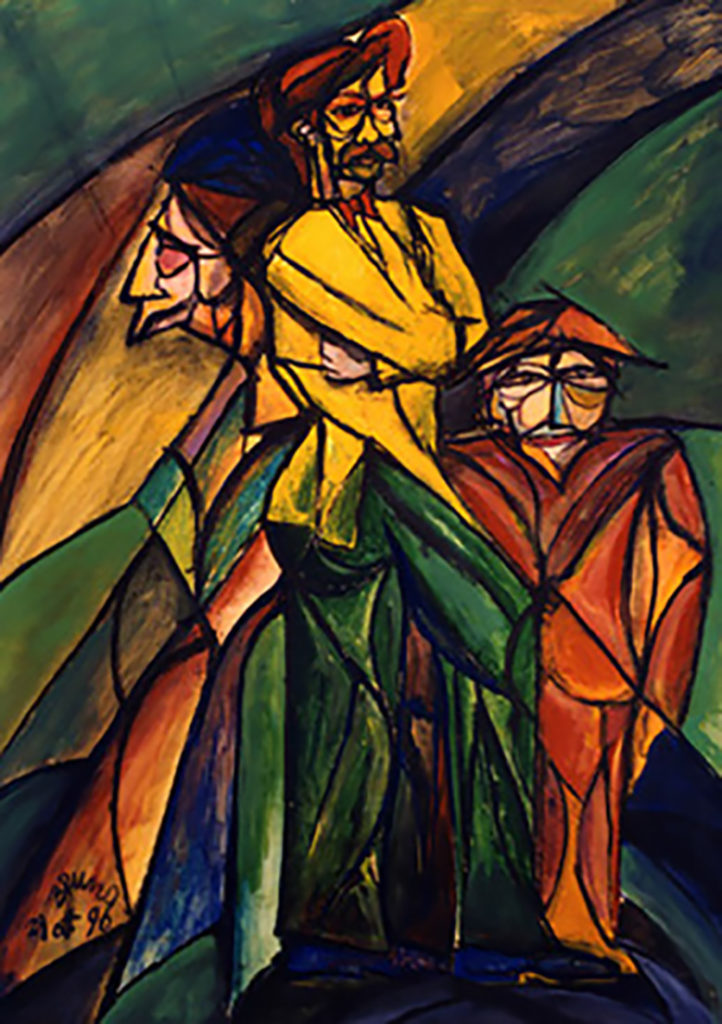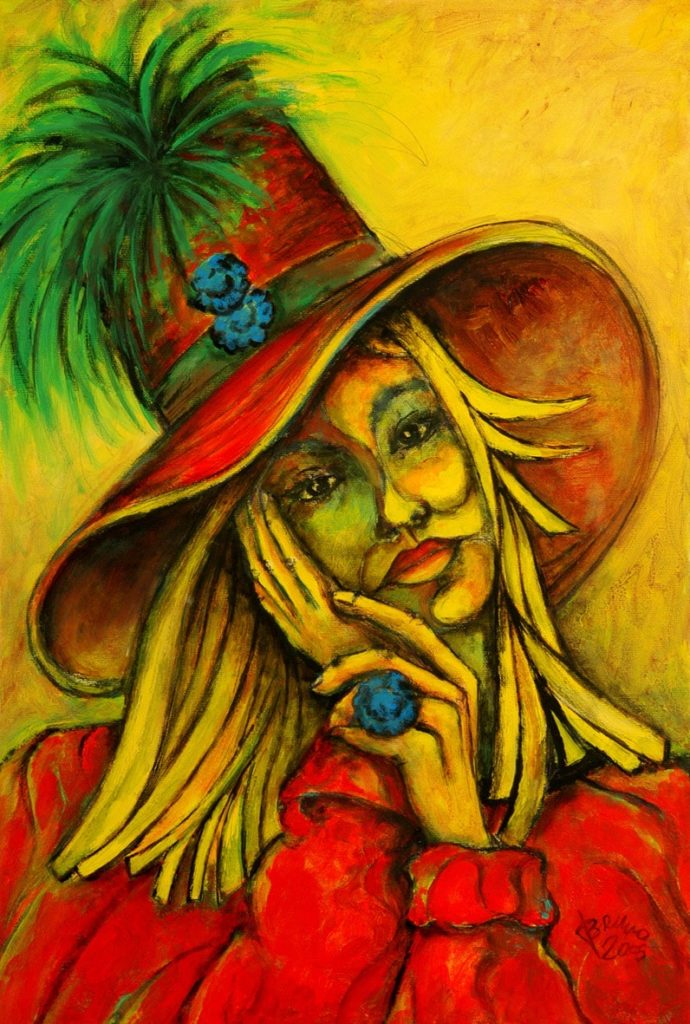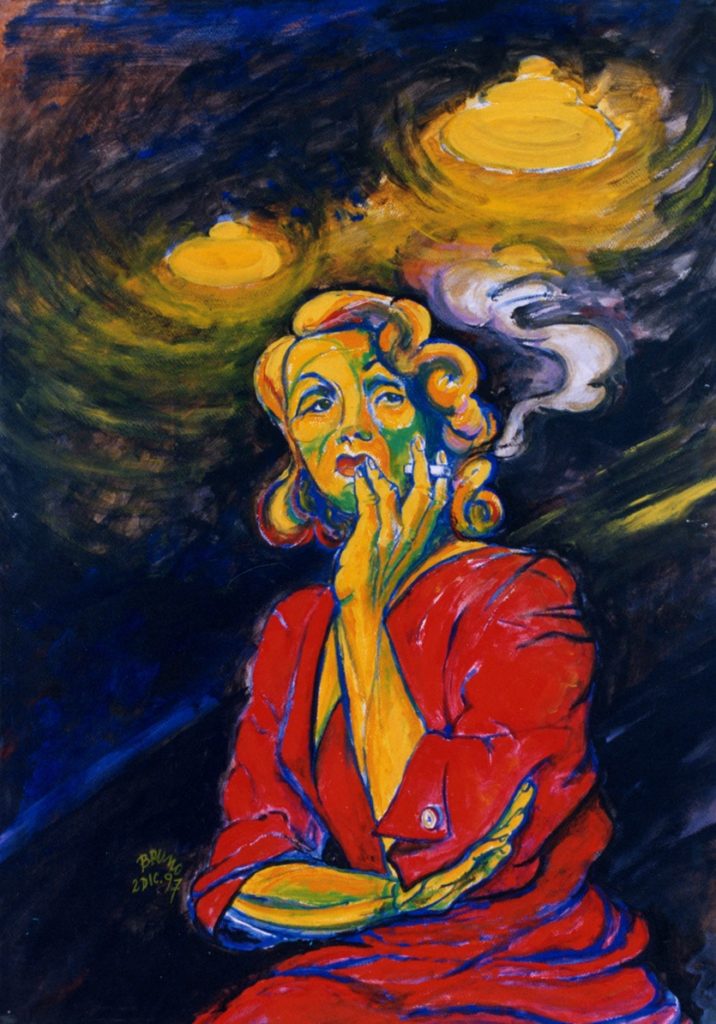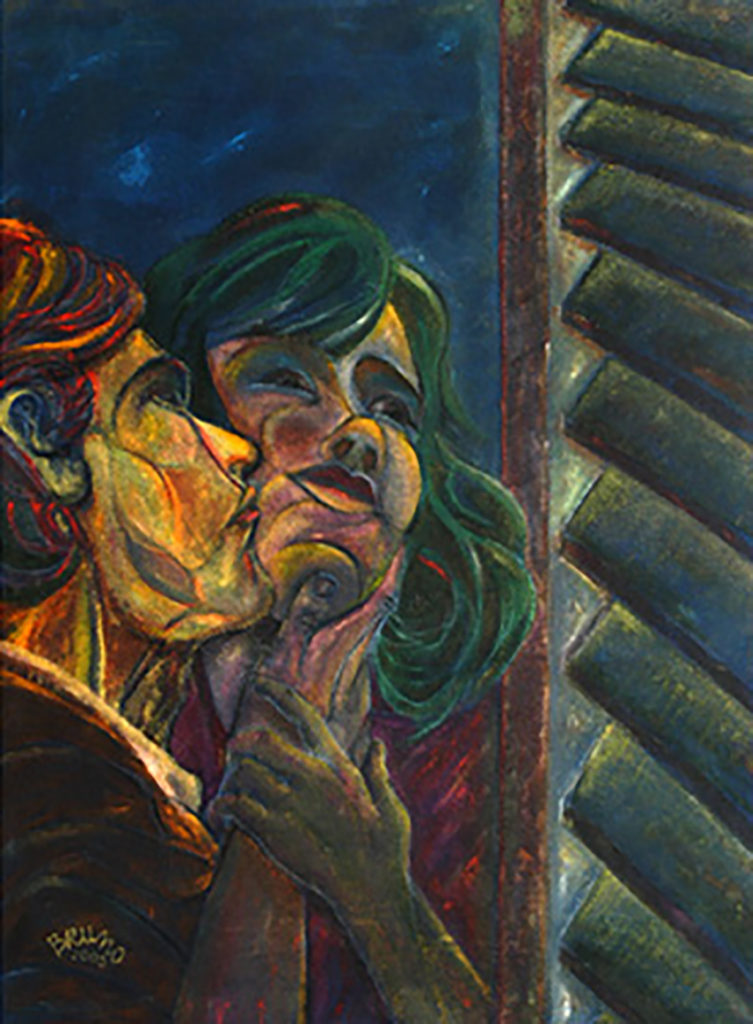
Shape
In the works of Bruno Fustini, volumes are often flattened and caged by stretched outlines that call to mind African tribal art, especially in the carved and extremely rough definition of some faces. The third dimension is therefore to be found in the creases of these expressions, which continue to conserve their prevalently graphic sign.

Color
In the amalgamation of mark and color that characterizes the artist’s paintings since the early 90s, the bright and sometimes violent colors, associated with sharp-edges bodies and the strong outlines with bold contrasts, are all pointing to the greta artistic trends that had animated the beginning of the twentieth century. From bestial impetus of the Fauves, to the expressive force of the secession of Austria and Germany. From the breakdown of the lines of Cezanne, Picasso and Braque to the restless figures of Kirchner, Munch and Schiele, from Klimt’s decorative geometries to those sophisticated graphic of Klee and Kandinsky. Not by chance the bright colors of paintings by these artists are also the colors of the publicity that for a century chooses to focus oc color, contrast, chromatics.

Themes
The themes are related to the life of the artist. First of all, the city where ho works, Bologna, shown with distorted architecture, exquisitely graphic and achromatic pendulum, swinging between a somber and a vibrant visual perspective, between the city’s medieval character and a most shamalessly pop one. There are actresses there, famous people, news events, references to history and religion, anonymous profiles, absent or cheery faces, posing or thinking faces, dreamscapes or landscapes, and curiosities or everyday objects.

Substance
The research and the choice of material to work with, and it’s size, are an integral part of the pictorial work. Canvas, cardboard, jute, a wooden cupboard door, a piece of carpet, a page from a calendar, even a piece of paper become the ideal material support to create graphic and coloristic witnesses.

